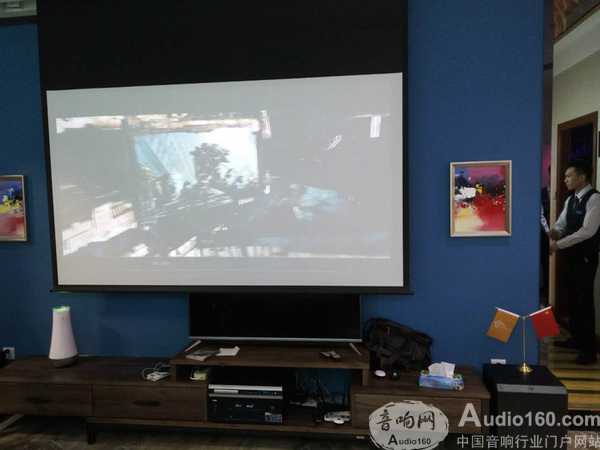In the process of building a home theater, the importance of wiring is self-evident. Today, I will share with you some useful home theater wiring skills.
First, when the ceiling space is not enough, how to route?
solution:
1. Increase the bottom of the ceiling: Even if there is no space on the ceiling, the user can still hide the automatic projector and screen on the special ceiling. The ceiling is mainly used to support and hide large equipment in the home theater system, and also adds some architecture to the room according to the needs of users.
2, installed on the wall: curtains and projectors slowly rise and fall from the ceiling to add a lot of color to the home theater, it is also feasible to install these devices on the wall. For example, a flat-panel TV is installed directly in front of the wall, covered with gauze curtains, and then a starter is placed next to the TV. The gauze curtain is opened or closed by the device, giving the audience a cinematic realism.
On the other side of the room, mount the projector on the back wall or hide it in the coffee table with the speakers installed next to it. If there is not enough space on the ceiling, it is not possible to install a ceiling-mounted speaker. In this case, the user can choose the wall-mounted speaker (such as the ultra-thin flat speaker V2 with a thickness of only 29mm), so that it will not affect The original decoration style, and the experience of “only smelling its shape†makes the room more technical.

Second, the cement ground wiring method solution:
1. If the user is willing to install the cable under the carpet and the floor, you can make a hole in the floor and implant the cable along the corresponding pipe to fully protect the cable.
2. Drill holes in the concrete floor. The cables are hidden according to the path. Although the cable layout is good, it will have a relatively large impact on the overall aesthetics of the room. The overall project is complicated. If the user feels that the project is too cumbersome, then you can choose a flat cable. The cable is very thin and the thickness is like paper. If it is installed between the floor and the floor, the thickness is basically negligible, and the user is not easy. It is noticed, but there is a drawback in wiring in this way, that is, the floor above the wiring cannot be placed too heavy furniture.
3, wiring on the floor is the most common way, through the wall wiring is also a good choice. Cables can be mounted behind equipment such as siding and seat.

Third, when the sound quality is poor, how to make up for the wiring orientation?
solution:
1. Changing the room space or rearranging the furniture position can greatly improve the overall sound experience of the room. For example, the user can install a virtual wall in front of or behind the room to change the depth of the room. If you need to adjust the side wall, you can add a sound panel and move a certain distance. At the same time, we can also make full use of other facilities in the room, such as bookshelves and other decorations.
2. Sometimes, many unobtrusive devices in the room have a great effect on the improvement of sound quality, such as the closet in the room, the beveled ceiling or the release wall. Therefore, when installing a home theater system, it is best to consult the decoration company, seek the best layout advice, try not to ignore some small details, often these small details have an unpredictable impact on the sound quality.
network cabinet is widely used for 19 inch network server enclosure perferated cabinet installing and placing of 19" international standard equipment and the system integration. Network Cabinets support large, modular network switches by providing additional space for cable management and side-to-side airflow solutions.
Network Cabinet,Electrical Cabinets,Wall Mount Server Cabinet,Wall Mount Server Cabinet,Wall Mount Cabinets,Electrical Distribution Cabinets
Sijee Optical Communication Technology Co.,Ltd , https://www.sijee-optical.com